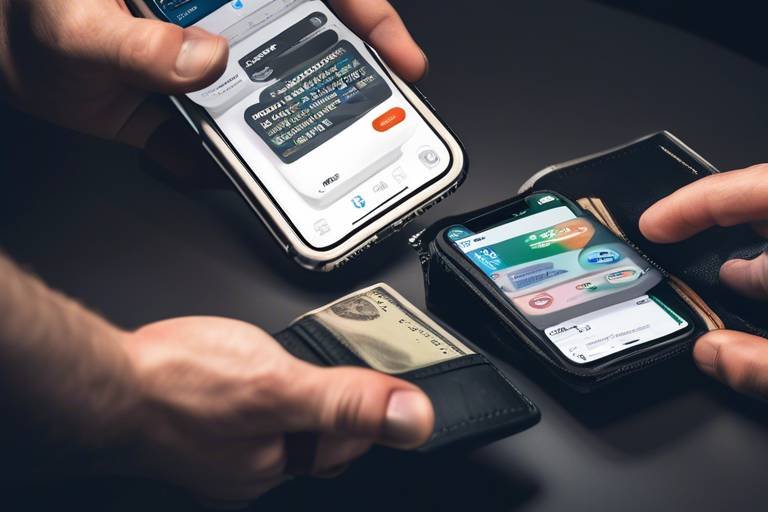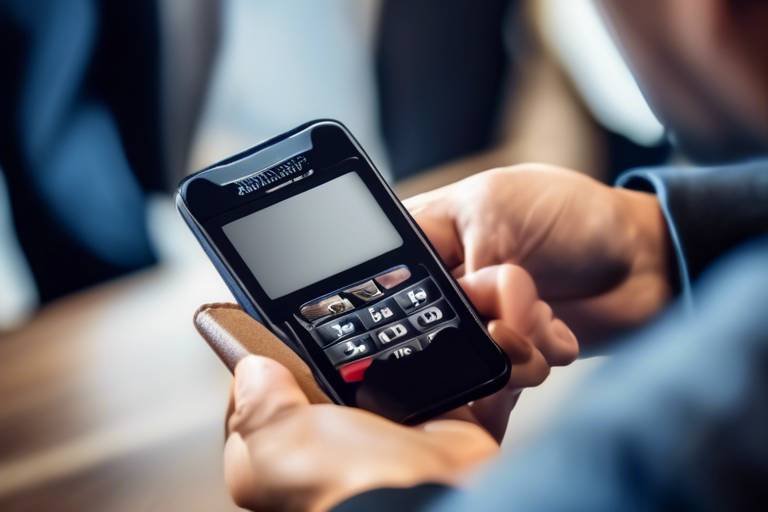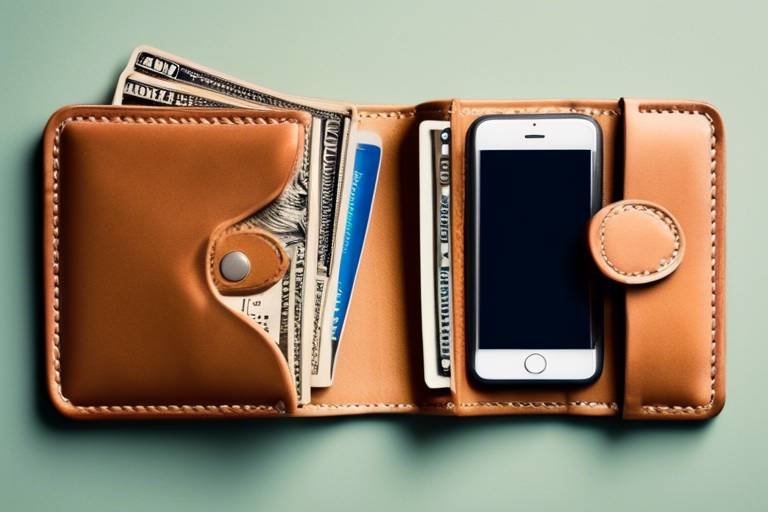The Best Strategies for Storing Your Cryptocurrencies Safely
In the rapidly evolving world of digital currencies, securing your cryptocurrencies is more important than ever. With the rise of cyber threats and the increasing sophistication of hackers, it’s crucial to adopt effective strategies for storing your digital assets. Think of your cryptocurrencies as treasure; without the right protection, it can easily be stolen or lost. In this article, we will explore various strategies to securely store your cryptocurrencies, emphasizing the importance of safety measures to protect your digital assets from theft and loss.
Cryptocurrency wallets are essential tools for storing digital currencies. They function like a digital bank account, allowing you to send, receive, and manage your cryptocurrencies. However, not all wallets are created equal. There are two main types: hot wallets and cold wallets. Hot wallets are connected to the internet and are great for quick transactions, but they come with their own set of risks. On the other hand, cold wallets are offline storage options that provide enhanced security. Understanding these wallets is the first step toward safeguarding your assets.
Selecting the appropriate wallet is crucial for security. When choosing a wallet, consider factors such as ease of use, security measures, and compatibility with various cryptocurrencies. A wallet that is simple to navigate can save you time and frustration, especially when you need to make a quick transaction. Additionally, look for wallets that offer strong security features, such as encryption and two-factor authentication. Compatibility is also key; you want a wallet that supports the cryptocurrencies you intend to store.
Hot wallets are connected to the internet, making them convenient for transactions. They are ideal for users who frequently buy, sell, or trade cryptocurrencies. However, this convenience comes at a cost. Because they are online, hot wallets are more vulnerable to hacking and phishing attacks. While they are great for short-term storage, it’s essential to be aware of the risks involved. Always weigh the convenience against the potential security threats.
Hot wallets face various security threats that can compromise your assets. Common risks include:
- Hacking: Cybercriminals often target hot wallets, exploiting vulnerabilities to steal funds.
- Phishing: Scammers may trick users into providing login credentials through fake websites or emails.
- Malware: Malicious software can be used to gain unauthorized access to your wallet.
To mitigate these risks, it is vital to use strong passwords, enable two-factor authentication, and be cautious of suspicious links or emails.
To enhance security while using hot wallets, users should adopt best practices. Here are some practical tips:
- Use Strong Passwords: Create complex passwords that are hard to guess and change them regularly.
- Enable Two-Factor Authentication: This adds an extra layer of security by requiring a second form of verification.
- Regular Updates: Keep your wallet and device software up to date to protect against vulnerabilities.
By following these guidelines, you can significantly reduce the risks associated with hot wallets.
Cold wallets are offline storage options that provide enhanced security for your cryptocurrencies. Unlike hot wallets, cold wallets are not connected to the internet, making them much less susceptible to cyber threats. There are two main types of cold wallets: hardware wallets and paper wallets. Hardware wallets are physical devices that store your private keys securely, while paper wallets involve printing your keys on a piece of paper. Both options are excellent for long-term storage, but they require careful handling to avoid loss or damage.
Backing up your wallet is vital to safeguard your assets. If you lose access to your wallet due to a device failure or accidental deletion, having a backup can save you from losing everything. There are various methods for backing up wallets, such as creating a digital copy of your wallet file or writing down your seed phrase. It's essential to store these backups in a safe location, away from prying eyes.
Creating secure backups involves storing wallet information safely. Here are some best practices for creating and managing backups:
- Use Encrypted Storage: Always store your backups in an encrypted format to prevent unauthorized access.
- Multiple Copies: Keep multiple copies in different locations, such as a USB drive and a secure cloud service.
- Test Your Backups: Regularly check your backups to ensure they are functioning correctly and can be restored.
By following these practices, you can ensure that your backup is reliable and accessible when needed.
Losing access to a wallet can be distressing, but there are recovery options available. Most wallets provide a seed phrase or recovery key upon setup. This phrase is crucial for regaining access to your funds if you lose your wallet. Always store your seed phrase in a secure location, as anyone with access to it can control your cryptocurrencies. If you ever find yourself locked out, refer to your seed phrase to recover your assets and regain peace of mind.
Q1: What is the safest way to store cryptocurrencies?
A1: The safest way to store cryptocurrencies is by using cold wallets, such as hardware or paper wallets, which are not connected to the internet.
Q2: How often should I back up my wallet?
A2: It’s a good practice to back up your wallet whenever you make significant changes, such as adding new funds or changing settings.
Q3: Can I recover my wallet if I lose my seed phrase?
A3: Unfortunately, if you lose your seed phrase, you may lose access to your funds permanently. Always keep it secure and backed up.

Understanding Cryptocurrency Wallets
When it comes to managing your cryptocurrencies, understanding cryptocurrency wallets is paramount. Think of a wallet as a digital vault where your precious assets are stored. Just like you wouldn't keep all your cash in your pocket while walking through a crowded market, you shouldn't keep all your digital currencies in one place without proper security measures. Cryptocurrency wallets come in various forms, each designed to cater to different needs and preferences.
At a high level, there are two main categories of wallets: hot wallets and cold wallets. Hot wallets are connected to the internet, making them incredibly convenient for daily transactions. On the other hand, cold wallets are offline storage options, providing a fortress-like security for your digital assets. Each type has its own set of features, advantages, and drawbacks, which we'll explore in more detail below.
Hot wallets, while user-friendly and quick for making transactions, expose your assets to potential online threats. Imagine leaving your front door wide open while you run to the store—it's easy for someone to just walk in and take what they want. Conversely, cold wallets are like a safe hidden away in a bank vault; they are much less susceptible to hacking and other online threats because they aren't connected to the internet. However, this added security comes with the trade-off of convenience, as accessing your funds may take a bit more time.
To further clarify the differences between these wallets, here’s a simple table:
| Wallet Type | Connection | Security Level | Best For |
|---|---|---|---|
| Hot Wallet | Online | Lower | Frequent transactions |
| Cold Wallet | Offline | Higher | Long-term storage |
Understanding these differences is crucial for any cryptocurrency user. You wouldn’t want to store your life savings in a wallet that’s easily accessible to anyone with a computer, right? By recognizing the strengths and weaknesses of each wallet type, you can make informed decisions about how to store your digital currencies safely.
In summary, cryptocurrency wallets are not just a means to hold your digital assets; they are a critical part of your overall strategy for managing and protecting your investments. By taking the time to understand the various types of wallets and their respective features, you can better safeguard your cryptocurrencies against theft and loss. So, whether you choose the convenience of a hot wallet or the security of a cold wallet, make sure to prioritize safety in your digital asset management.
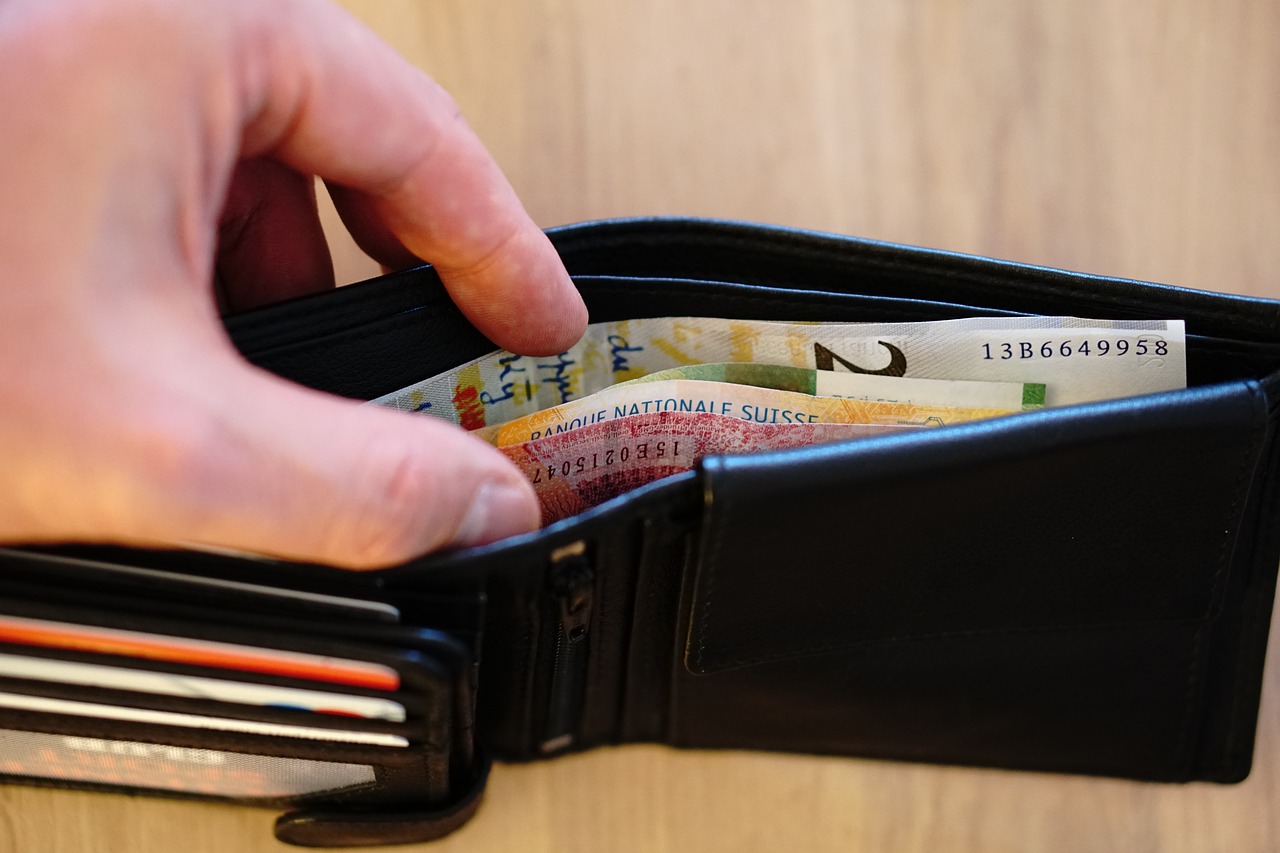
Choosing the Right Wallet
When it comes to storing your cryptocurrencies, making the right choice of wallet is crucial. After all, your digital assets are valuable, and you wouldn’t leave your cash lying around, would you? The same principle applies here. You need to consider several factors to ensure that you choose a wallet that not only meets your needs but also keeps your assets safe. Think of it as choosing a safe for your treasures; the better the safe, the more secure your treasures will be.
First and foremost, you should consider the ease of use. If you're new to the world of cryptocurrencies, a wallet that is user-friendly will make your experience much smoother. You want something that doesn’t require a PhD in computer science to navigate. Look for wallets that offer intuitive interfaces and clear instructions for transactions. A wallet that is easy to use will not only save you time but also reduce the chances of making costly mistakes.
Next up is security measures. This is where the rubber meets the road. A wallet can have all the bells and whistles, but if it isn’t secure, you might as well be keeping your coins in a paper bag. You’ll want to look for wallets that offer features like two-factor authentication, biometric access, and strong encryption. These features act as layers of protection, making it harder for unauthorized users to gain access to your funds.
Another factor to keep in mind is compatibility with various cryptocurrencies. Not all wallets support every coin out there. If you plan on diversifying your portfolio, it’s smart to choose a wallet that can accommodate multiple cryptocurrencies. This way, you won’t have to juggle between different wallets, which can be a hassle and potentially risky.
To help you further, here’s a quick comparison table that summarizes some popular wallet types and their features:
| Wallet Type | Security Level | User-Friendliness | Supported Cryptocurrencies |
|---|---|---|---|
| Hot Wallet | Medium | High | Most major cryptocurrencies |
| Cold Wallet | High | Medium | Most major cryptocurrencies |
| Hardware Wallet | Very High | Medium | Most major cryptocurrencies |
| Paper Wallet | Very High | Low | Most major cryptocurrencies |
In conclusion, choosing the right wallet is not just about picking a name from a hat. It’s about considering your personal needs and how you plan to use your cryptocurrencies. Take your time to research, read reviews, and maybe even ask for recommendations from experienced users. Remember, in the world of digital currencies, your wallet is your fortress. Choose wisely!

Hot Wallets Explained
Hot wallets are a popular choice among cryptocurrency enthusiasts due to their ease of use and convenience. These wallets are connected to the internet, which allows for quick transactions and easy access to your digital assets. Imagine having your cash in your pocket instead of a safe; that’s the essence of a hot wallet. However, this convenience comes with its own set of risks.
There are two main types of hot wallets: web wallets and mobile wallets. Web wallets are accessible through a browser, while mobile wallets are applications you can download on your smartphone. Both types offer the ability to send and receive cryptocurrencies instantly, which is particularly useful for traders or anyone who needs to make frequent transactions.
While hot wallets are user-friendly, they are also more vulnerable to online threats. For instance, hackers often target hot wallets due to their constant connection to the internet. This is akin to leaving your front door wide open while you’re away; it makes it easier for unwanted visitors to come in.
To help you understand the pros and cons of using hot wallets, here’s a quick comparison table:
| Advantages | Disadvantages |
|---|---|
|
|
As you can see, the convenience of hot wallets is appealing, but it’s essential to weigh these benefits against the potential risks. So, how can you enjoy the perks of hot wallets while minimizing the dangers? The next sections will delve into the security risks associated with hot wallets and best practices to ensure your assets remain safe.

Security Risks of Hot Wallets
Hot wallets are undeniably convenient, allowing users to access their cryptocurrencies at the click of a button. However, this convenience comes at a cost. The very nature of being connected to the internet exposes hot wallets to a myriad of security risks that can compromise your digital assets. One of the most significant threats is hacking. Cybercriminals are constantly on the lookout for vulnerabilities in online wallets, and a single weak password can be the gateway for them to drain your funds. Just think of it as leaving your front door wide open while you’re away; it’s an invitation for trouble.
Another prevalent risk is phishing attacks. Scammers often create fake websites or send deceptive emails that mimic legitimate wallet services, tricking users into providing their login credentials. It’s like a wolf in sheep’s clothing, and unfortunately, many unsuspecting users fall prey to these tactics. To illustrate the various risks associated with hot wallets, consider the following table:
| Risk Type | Description | Mitigation Strategy |
|---|---|---|
| Hacking | Unauthorized access to your wallet through vulnerabilities. | Use strong passwords and enable two-factor authentication. |
| Phishing | Fraudulent attempts to steal your credentials. | Always verify URLs and avoid clicking on suspicious links. |
| Malware | Malicious software designed to steal sensitive information. | Install reputable antivirus software and keep it updated. |
Additionally, the risk of malware cannot be overlooked. If your device is infected with malicious software, hackers can easily access your wallet and steal your cryptocurrencies. This is akin to allowing a stranger into your home who then rummages through your belongings. To safeguard against this, it is essential to keep your devices secure and regularly scan them for malware.
In summary, while hot wallets offer a user-friendly way to manage cryptocurrencies, they come with inherent risks that every user should be aware of. By understanding these threats and implementing robust security measures, you can significantly reduce the chances of falling victim to cybercrime. Always remember, in the world of digital currencies, being proactive about security is not just wise; it’s essential.
- What is a hot wallet? A hot wallet is a cryptocurrency wallet that is connected to the internet, making it easy to access and use your digital assets.
- Are hot wallets safe to use? While hot wallets are convenient, they are more vulnerable to hacking and phishing attacks compared to cold wallets.
- How can I protect my hot wallet? Use strong passwords, enable two-factor authentication, and be cautious of phishing attempts.
- What should I do if I suspect my wallet has been compromised? Immediately change your password, enable security features, and transfer your assets to a more secure wallet.
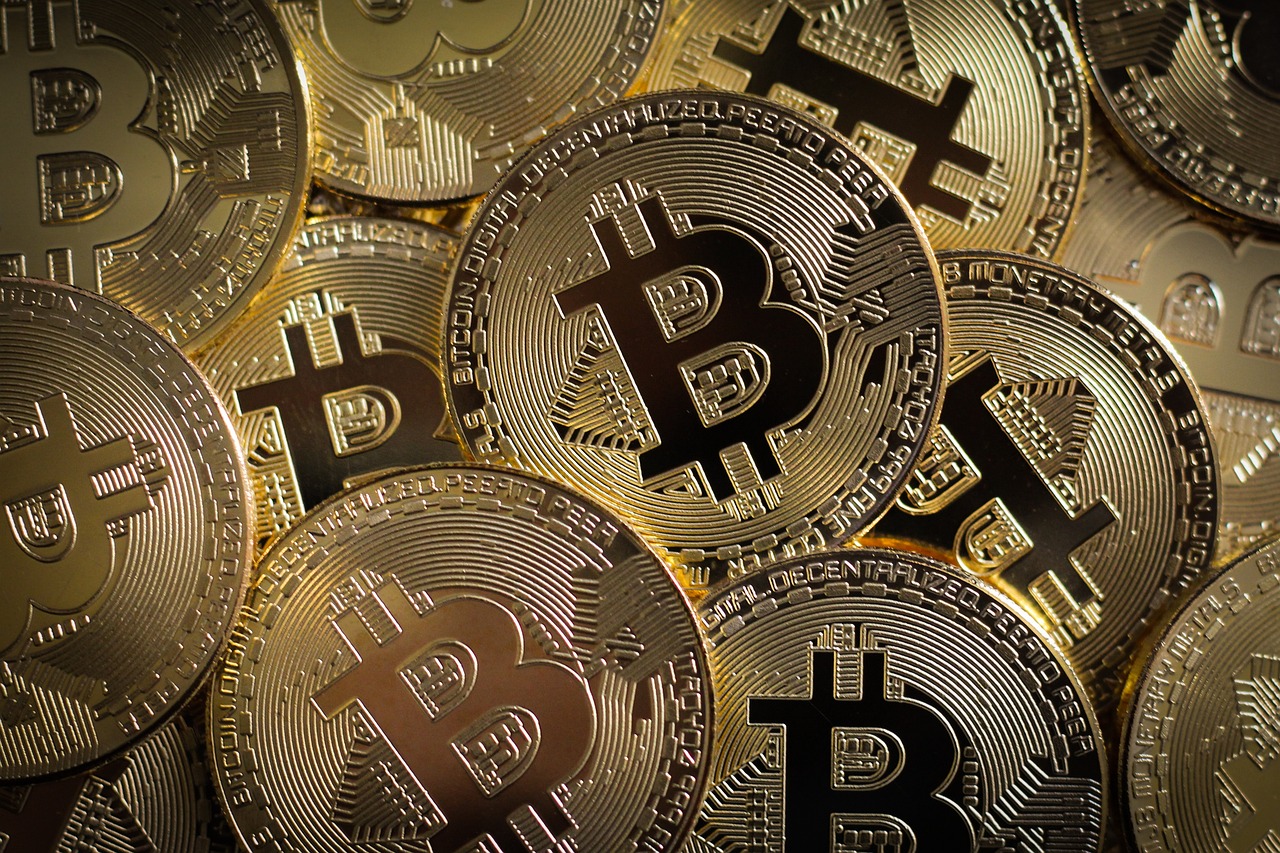
Best Practices for Using Hot Wallets
When it comes to using hot wallets, adopting best practices is crucial to ensure the safety of your digital assets. Hot wallets are convenient because they provide quick access to your cryptocurrencies for trading and transactions. However, their connection to the internet makes them more vulnerable to security threats. So, how can you enjoy the benefits of hot wallets while minimizing the risks? Here are some essential strategies.
First and foremost, password management is key. Always use a strong, unique password for your hot wallet. Think of your password as the gatekeeper to your digital treasure. The stronger the gate, the harder it is for intruders to break in. Avoid using easily guessable passwords, such as birthdays or common phrases. Instead, consider using a mix of uppercase and lowercase letters, numbers, and special characters. You might even want to use a password manager to help keep track of your passwords securely.
Another layer of security you should implement is two-factor authentication (2FA). This is like having a second lock on your door. Even if someone manages to get your password, they would still need the second factor—often a temporary code sent to your mobile device—to access your wallet. Many hot wallet providers offer 2FA, so make sure to enable this feature. It's a simple step that significantly enhances your security.
Furthermore, regular updates are essential. Just like keeping your software up to date on your computer, your hot wallet should also be running the latest version. Developers frequently release updates to fix vulnerabilities and improve security features. By keeping your wallet updated, you reduce the risk of being exploited by hackers who take advantage of outdated systems.
Another best practice is to be cautious of phishing attempts. Phishing is a common tactic used by cybercriminals to trick you into providing sensitive information. Always double-check the URLs you visit and ensure they match the official website of your wallet provider. If you receive an email or message that seems suspicious, do not click on any links or provide your information. It's better to be safe than sorry.
Lastly, consider keeping only a portion of your cryptocurrencies in your hot wallet. Think of your hot wallet as your everyday wallet where you keep cash for daily expenses, while a cold wallet serves as a safe for your long-term savings. By limiting the amount of cryptocurrency stored in your hot wallet, you minimize potential losses in case of a security breach.
In summary, using hot wallets can be safe and convenient if you follow these best practices. By focusing on strong passwords, enabling two-factor authentication, keeping your wallet updated, being aware of phishing attempts, and limiting your exposure, you can significantly enhance the security of your digital assets.
1. What is a hot wallet?
A hot wallet is a cryptocurrency wallet that is connected to the internet, allowing for quick and easy transactions. However, this connectivity also exposes it to potential security risks.
2. How can I secure my hot wallet?
To secure your hot wallet, use strong passwords, enable two-factor authentication, regularly update your wallet software, and be cautious of phishing attempts.
3. Should I keep all my cryptocurrencies in a hot wallet?
It's advisable to keep only a portion of your cryptocurrencies in a hot wallet for everyday transactions. Use cold wallets for long-term storage of larger amounts.
4. What should I do if I suspect my hot wallet has been compromised?
If you suspect your hot wallet has been compromised, immediately transfer your remaining funds to a secure wallet and change your passwords. Investigate any suspicious activity and consider contacting your wallet provider for assistance.

Cold Wallets Explained
Cold wallets are a type of cryptocurrency storage that offers an exceptional level of security by keeping your digital assets offline. Imagine a vault that is locked away from the prying eyes of the internet; that’s essentially what a cold wallet does for your cryptocurrencies. By being disconnected from the internet, cold wallets protect your assets from online threats such as hacking and phishing attacks. They are particularly suited for long-term storage, making them an ideal choice for those who want to hold onto their cryptocurrencies without the constant worry of theft.
There are two main types of cold wallets: hardware wallets and paper wallets. Each of these options comes with its own set of benefits and considerations. Hardware wallets are physical devices, similar to USB drives, that store your private keys securely. They often come equipped with additional security features like PIN codes and biometric authentication, making them a fortress for your cryptocurrencies. On the other hand, paper wallets involve printing your private keys and public addresses on a piece of paper, which can be stored in a safe place. While this method is incredibly secure from online threats, it does come with risks like physical damage or loss.
| Type of Cold Wallet | Security Features | Best For |
|---|---|---|
| Hardware Wallet | PIN protection, encryption, backup options | Long-term storage with convenient access |
| Paper Wallet | Offline storage, no digital footprint | Ultimate security for long-term holding |
When considering cold wallets, it’s essential to weigh the pros and cons. While they provide superior security, they may lack the convenience of hot wallets for everyday transactions. For example, if you want to quickly buy a coffee with your cryptocurrency, a cold wallet wouldn't be the best option. However, for long-term investors who are looking to safeguard their assets, cold wallets are a no-brainer. They serve as a protective barrier, ensuring that your investments remain secure from the ever-evolving landscape of cyber threats.
Ultimately, the choice between a hardware wallet and a paper wallet depends on your personal needs and comfort level with technology. If you prefer a user-friendly interface and the ability to easily manage your assets, a hardware wallet may be your best bet. Conversely, if you’re looking for maximum security and don’t mind the hassle of managing a physical piece of paper, a paper wallet could be the way to go.
In conclusion, cold wallets are an indispensable tool for anyone serious about cryptocurrency investment. They provide peace of mind by keeping your assets secure and out of reach from online threats. Whether you choose a hardware or paper wallet, the key takeaway is that taking the necessary precautions to store your cryptocurrencies safely can make all the difference in protecting your digital wealth.
- What is the main advantage of using a cold wallet? The primary advantage of a cold wallet is that it is not connected to the internet, significantly reducing the risk of hacking and theft.
- Can I use both hot and cold wallets? Yes! Many users find that using a combination of both types of wallets allows them to manage their cryptocurrencies more effectively.
- How do I set up a cold wallet? Setting up a cold wallet typically involves purchasing a hardware wallet or generating a paper wallet. Follow the manufacturer's instructions or use a trusted online generator for paper wallets.

Backup and Recovery Strategies
When it comes to cryptocurrencies, the old adage "better safe than sorry" rings especially true. Imagine losing access to your digital assets because you didn't take the time to back them up properly. It’s a nightmare scenario for any crypto holder. That's why having robust backup and recovery strategies is not just a good idea; it's essential for safeguarding your investments. In this section, we’ll dive into various methods for backing up your wallets and how to recover your cryptocurrencies in case of loss.
Backing up your cryptocurrency wallet is like having an insurance policy for your digital assets. It ensures that even if something goes wrong—be it a hardware failure, accidental deletion, or even a cyber attack—you won’t lose everything. But how do you create a secure backup? Well, there are several methods available, and the best choice often depends on your personal preferences and the type of wallet you’re using.
One of the most common methods for backing up a wallet is to create a seed phrase. This is a series of words generated by your wallet that acts as a master key to access your funds. It's crucial to write this down and store it in a safe place, preferably offline. Imagine your seed phrase as the key to your treasure chest; if you lose it, you might as well bury that chest forever. Additionally, many wallets offer the option to export your private keys, which can also be stored securely. However, keep in mind that anyone with access to your private keys can control your funds.
For those who prefer a more tangible approach, hardware wallets are a fantastic option. These devices store your cryptocurrency offline, making them less susceptible to online threats. When using a hardware wallet, it’s vital to back up your recovery seed, which is usually provided when you first set up the device. This recovery seed is your lifeline; if your hardware wallet gets lost or damaged, you can still regain access to your cryptocurrencies using this seed.
Now, let’s talk about recovery options. Losing access to your wallet can feel like losing a part of yourself, but it doesn’t have to be the end of the road. If you’ve taken the necessary precautions and backed up your wallet, regaining access should be straightforward. Most wallets allow you to restore access using your seed phrase or recovery keys. Simply follow the wallet’s recovery process, input your seed phrase, and voilà—you’re back in business!
However, if you find yourself in the unfortunate situation of not having a backup, things can get tricky. Some wallets offer customer support that may assist you, but there’s no guarantee. This is why proactive measures are so critical. To help you understand the importance of backup and recovery strategies, here’s a quick comparison of the most common backup methods:
| Backup Method | Pros | Cons |
|---|---|---|
| Seed Phrase | Easy to create and restore | Must be stored securely; loss means loss of funds |
| Private Keys | Direct access to funds | Risky if not stored securely |
| Hardware Wallets | Highly secure, offline storage | Costly; requires physical security |
In summary, having a solid backup and recovery strategy is your best defense against losing your cryptocurrencies. Whether you choose to rely on seed phrases, private keys, or hardware wallets, the key is to ensure that your backup is secure and easily accessible when needed. Remember, in the world of crypto, it’s not just about acquiring assets; it’s about protecting them too. So, take the time now to set up your backup and recovery strategies, and you’ll sleep a lot easier knowing your digital treasure is safe.
- What should I do if I lose my seed phrase? Unfortunately, if you lose your seed phrase and have no backup, you may lose access to your cryptocurrency permanently.
- Are hardware wallets worth the investment? Yes, hardware wallets provide an additional layer of security, especially for long-term storage of your cryptocurrencies.
- Can I recover my wallet without a backup? Recovery options are limited without a backup. It’s always best to have a secure backup strategy in place.

Creating Secure Backups
When it comes to storing your cryptocurrencies, one of the most critical steps you can take is creating secure backups of your wallet. Imagine losing access to your digital assets due to a hardware failure, a lost device, or a software glitch. It’s like losing a treasure chest without a map to find it again! To avoid such a nightmare, it’s essential to have a foolproof backup strategy in place.
First and foremost, you should understand that there are several methods for backing up your wallet, and each has its own pros and cons. For instance, you can opt for a physical backup, such as writing down your seed phrase or recovery keys on paper. This method is simple and effective, but it requires you to store that paper in a secure location, away from prying eyes and potential disasters like fire or water damage.
Another popular option is to create digital backups. This could involve securely storing your wallet file on an encrypted USB drive or using cloud storage with strong encryption. However, keep in mind that while digital backups are convenient, they can also be vulnerable to hacking. Therefore, if you choose this route, make sure to use robust security measures, such as strong passwords and two-factor authentication.
Here’s a quick overview of the best practices for creating secure backups:
- Use multiple backup methods: Don’t rely on just one backup method. Combine physical and digital backups to enhance security.
- Keep backups in different locations: Store copies of your backups in multiple secure locations to protect against theft or natural disasters.
- Regularly update your backups: Whenever you make significant changes to your wallet, such as adding new cryptocurrencies or changing your security settings, ensure you update your backups accordingly.
- Test your backups: Periodically check if your backups are functional. This ensures that you can recover your wallet if needed.
To make it even easier, consider using a backup tool specifically designed for cryptocurrency wallets. These tools often provide user-friendly interfaces and automated backup options, making the process less daunting for those who may not be tech-savvy. However, ensure that any tool you use is reputable and has positive reviews from the community.
In summary, creating secure backups is not just a precaution; it's a necessity in the world of cryptocurrencies. By following these best practices and being proactive about your backup strategy, you can safeguard your digital assets against unforeseen circumstances. Remember, in the realm of crypto, it's better to be safe than sorry!
- What should I do if I lose my backup?
If you lose your backup, recovery depends on whether you have your seed phrase or recovery keys. If you have those, you can restore your wallet. If not, unfortunately, you may lose access to your assets. - How often should I back up my wallet?
It's advisable to back up your wallet every time you make a significant change, such as adding new cryptocurrencies or changing your security settings. - Can I back up my wallet on my computer?
Yes, but it's crucial to ensure your computer is secure and protected with antivirus software. Consider using encryption for added security.

Recovery Options for Lost Wallets
Imagine waking up one day and realizing that you can no longer access your cryptocurrency wallet. Panic sets in as you think about all those digital assets you’ve worked so hard to accumulate. But fear not! There are several recovery options available that can help you regain access to your lost wallet. Understanding these methods is crucial, as they can save you from potentially losing your investments forever.
One of the primary recovery options involves using your seed phrase. This is a series of words generated when you first set up your wallet, often consisting of 12 to 24 words. It serves as a master key to your wallet. If you’ve stored this phrase securely, you can easily restore your wallet on another device. However, if you’ve misplaced it, recovery can become complicated. Always remember to write it down and keep it in a safe place, away from prying eyes.
Another option is the use of recovery keys. These are similar to seed phrases but are typically longer and more complex. Recovery keys can be generated by some wallets during setup, and they function as a backup to help you regain access. If your wallet allows for recovery keys, be sure to save them in a secure location, just like your seed phrase.
In cases where you’ve lost access to your wallet due to a device failure, many wallets offer cloud backup options. If you had enabled this feature, your wallet information might be stored in the cloud, allowing you to recover it easily. However, relying on cloud services can introduce additional risks, so always ensure that your cloud storage is secure and protected by strong passwords and two-factor authentication.
For those who have lost their wallets entirely, the situation may seem dire, but it’s worth trying to reach out to the wallet provider’s customer support. Some wallet providers have protocols in place to assist users in recovering lost wallets, especially if you can provide proof of ownership. While this may not guarantee recovery, it’s a step worth taking.
Lastly, it’s important to educate yourself about the recovery processes specific to your wallet. Many wallets have unique recovery methods, and understanding these can make a significant difference. Always refer to the official documentation or support channels of your wallet provider for detailed instructions.
In summary, while losing access to your cryptocurrency wallet can be a stressful experience, knowing your recovery options can give you peace of mind. Always prioritize securing your seed phrases and recovery keys, utilize cloud backups if available, and don’t hesitate to contact customer support if needed. With the right knowledge and tools, you can navigate the challenges of wallet recovery and safeguard your digital assets effectively.
- What should I do if I lose my seed phrase?
If you lose your seed phrase, unfortunately, there is no way to recover your wallet. It is vital to store it securely. - Can I recover my wallet without a recovery key?
It may be challenging, but you can try contacting your wallet provider's customer support for assistance. - How often should I back up my wallet?
It's a good practice to back up your wallet whenever you make significant changes or transactions.
Frequently Asked Questions
- What is a cryptocurrency wallet?
A cryptocurrency wallet is a digital tool that allows you to store, send, and receive cryptocurrencies. Think of it like a bank account, but instead of holding traditional money, it holds digital coins. There are different types of wallets, including hot wallets that are connected to the internet and cold wallets that are offline.
- What are the main differences between hot and cold wallets?
Hot wallets are online and user-friendly, making them perfect for quick transactions. However, they are more vulnerable to hacking. Cold wallets, on the other hand, are offline and provide a higher level of security, making them ideal for long-term storage. They are less convenient for daily transactions but offer peace of mind for your digital assets.
- How do I choose the right cryptocurrency wallet?
Choosing the right wallet depends on your needs. Consider factors like ease of use, security features, and compatibility with the cryptocurrencies you own. If you're trading frequently, a hot wallet might be suitable, but if you're looking to hold long-term, a cold wallet is recommended.
- What security risks should I be aware of when using hot wallets?
Hot wallets can be susceptible to hacking, phishing attacks, and malware. It's crucial to implement strong security measures, such as using complex passwords, enabling two-factor authentication, and being cautious of suspicious links or emails.
- What are some best practices for using hot wallets?
To enhance security while using hot wallets, follow these best practices: regularly update your wallet software, use strong and unique passwords, enable two-factor authentication, and avoid accessing your wallet on public Wi-Fi networks.
- What types of cold wallets are available?
Cold wallets come in various forms, including hardware wallets, which are physical devices that store your keys offline, and paper wallets, which are printed documents containing your keys. Both options provide enhanced security for long-term storage.
- Why is backing up my wallet important?
Backing up your wallet is essential to safeguard your assets. If you lose access to your wallet due to a device failure or other issues, having a backup allows you to recover your cryptocurrencies. It’s like having a spare key to your house; it ensures you can always get back in.
- How can I create secure backups of my wallet?
To create secure backups, store your wallet information in multiple safe locations, such as encrypted USB drives or secure cloud storage. Regularly update your backups to reflect any changes in your wallet, and ensure that these backups are protected by strong passwords.
- What should I do if I lose access to my wallet?
If you lose access to your wallet, don’t panic! Most wallets provide recovery options using seed phrases or recovery keys. Make sure to keep these phrases secure and accessible, as they are your lifeline to regain access to your cryptocurrencies.




